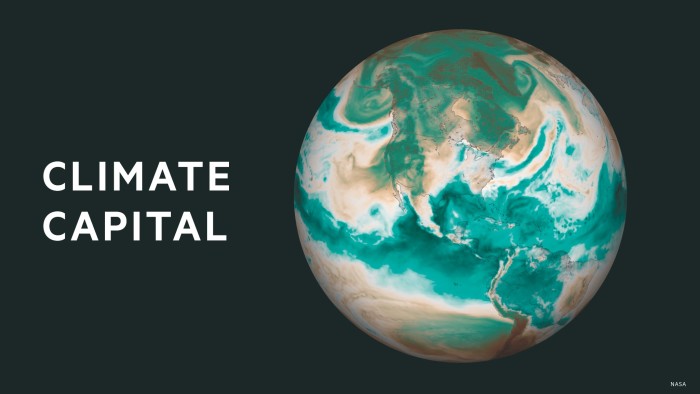How we made it: global energy demand link to climate change
March 31, 2025
Global energy demand rose faster than usual last year as record temperatures across the world meant more power was used for cooling in the self-perpetuating loop between climate change and energy use.
Electricity demand increased by 4.3 per cent, up from 2.5 per cent in 2023, according to the latest data published by the International Energy Agency (IEA). The surge was linked to exceptional heat, the electrification of transport, buildings and industry, as well as the expansion of data centres.
Most — but not all — of this increased electricity demand was met by a growing supply of clean sources. When it came to fossil fuels, natural gas demand increased most rapidly last year, reaching an all-time high, while growth in oil and coal demand slowed.
How we made it: weather effects
Last year was the hottest on record. So, just how much did 2024’s weather drive the growth in energy demand?
The effect is twofold: warm weather increases cooling demand and at the same time, it can affect electricity generation.
Hydropower, for example, took a hit in some regions that experienced prolonged drought, requiring other power sources — such as coal — to kick in.
On the first effect: so-called global “cooling degree days” were 6 per cent higher in 2024 compared with 2023, and 20 per cent higher than the 2000-20 average.
Nerd note: Cooling degree days is a somewhat mind-bending indicator used as a measure of cooling needs. It is typically calculated over a year as the sum of all positive deviations of a day’s average temperature from a particular threshold temperature — often 21C. We’ve previously covered it in some more detail here
In summary, the IEA estimates that 15 per cent of the increase in energy demand was down to the effects of weather.
The contribution of hot temperatures to the change in electricity demand was higher at 20 per cent, as electricity demand is directly linked to cooling demand.
The increase in coal demand, meanwhile, was entirely down to the record temperatures — particularly driven by prolonged heatwaves in China and India. Which also helps explain why nearly half of the increase in energy-related emissions were due to these temperatures.
A simple bar chart, as used by the IEA analysts themselves, showed the relative effects on change in energy demand and resulting emissions.
After visualising the change in growth rates for electricity generation as well CO₂ emissions by source (the first graphic in this newsletter), I wanted to look in more detail at the affect these trends had on emissions over a longer period.
Waterfall charts can be confusing and not the most intuitive — but in some instances, they can be very useful to communicate certain data.
To show how deployment of clean energy technologies over the past six years had prevented emissions that would have resulted from the increased demand over the same period, I decided to create a waterfall chart that breaks down into its individual components when scrolling.
First I showed the 2019 level of emissions at 33.6 gigatons of CO₂, followed by its growth since then. I then incrementally highlighted the prevented emissions linked to clean technology as they got ‘subtracted’ from the original stack. This leaves 2024’s value of 34.9 Gt.

What is evident is that, although the roll out of clean technologies has slowed energy-related emissions growth, its deployment needs to be rapidly accelerated to stop emissions rising.
Join us at the Climate & Impact Summit on 21—22 May, hosted in London and online. Bringing together business, finance, and policy leaders, the event is dedicated to driving progress towards the UN Sustainable Development Goals through collaboration, innovation and investment. As a valued subscriber, enjoy 10% off your in-person pass here.
Climate Capital

Where climate change meets business, markets and politics. Explore the FT’s coverage here.
Are you curious about the FT’s environmental sustainability commitments? Find out more about our science-based targets here
Search
RECENT PRESS RELEASES
Related Post





